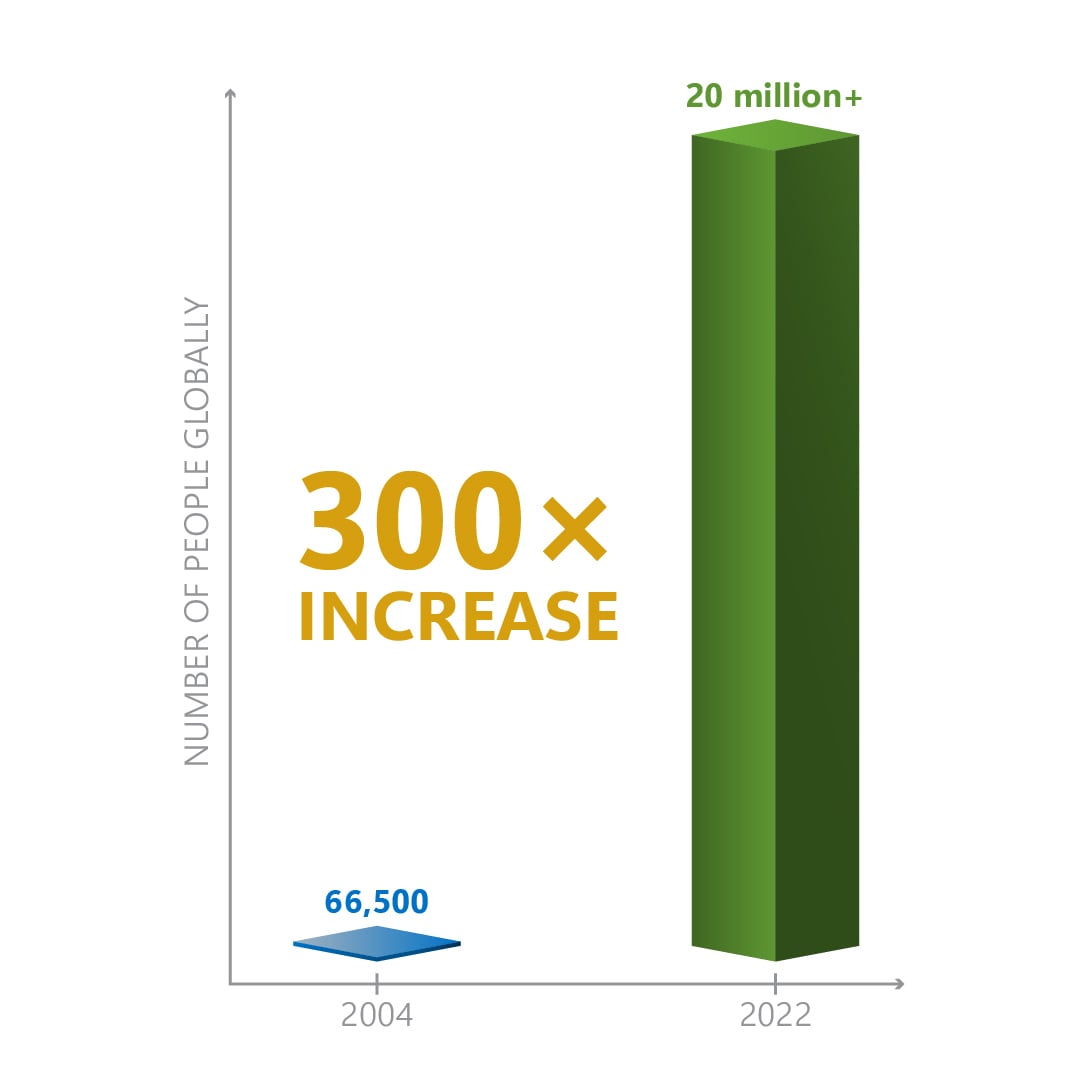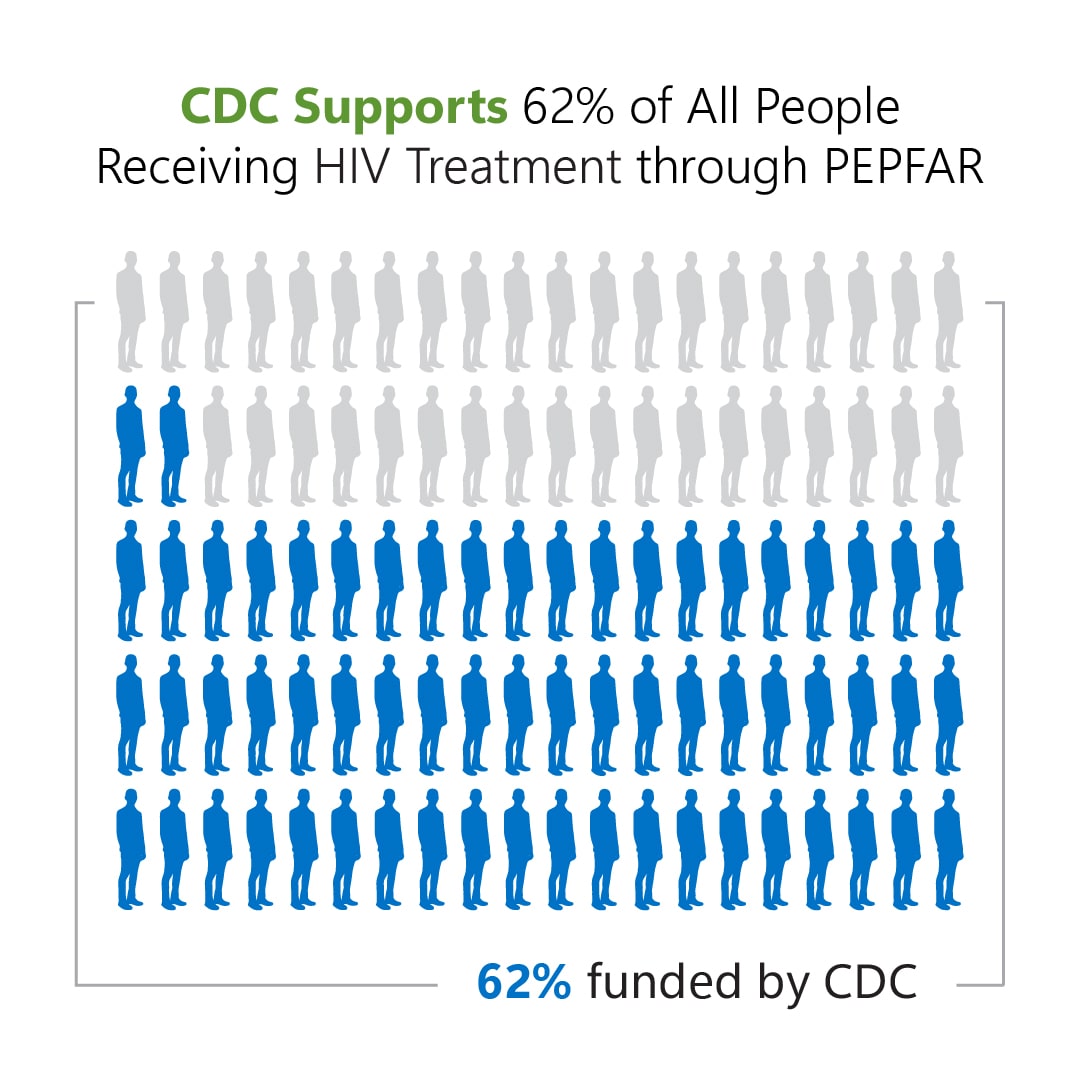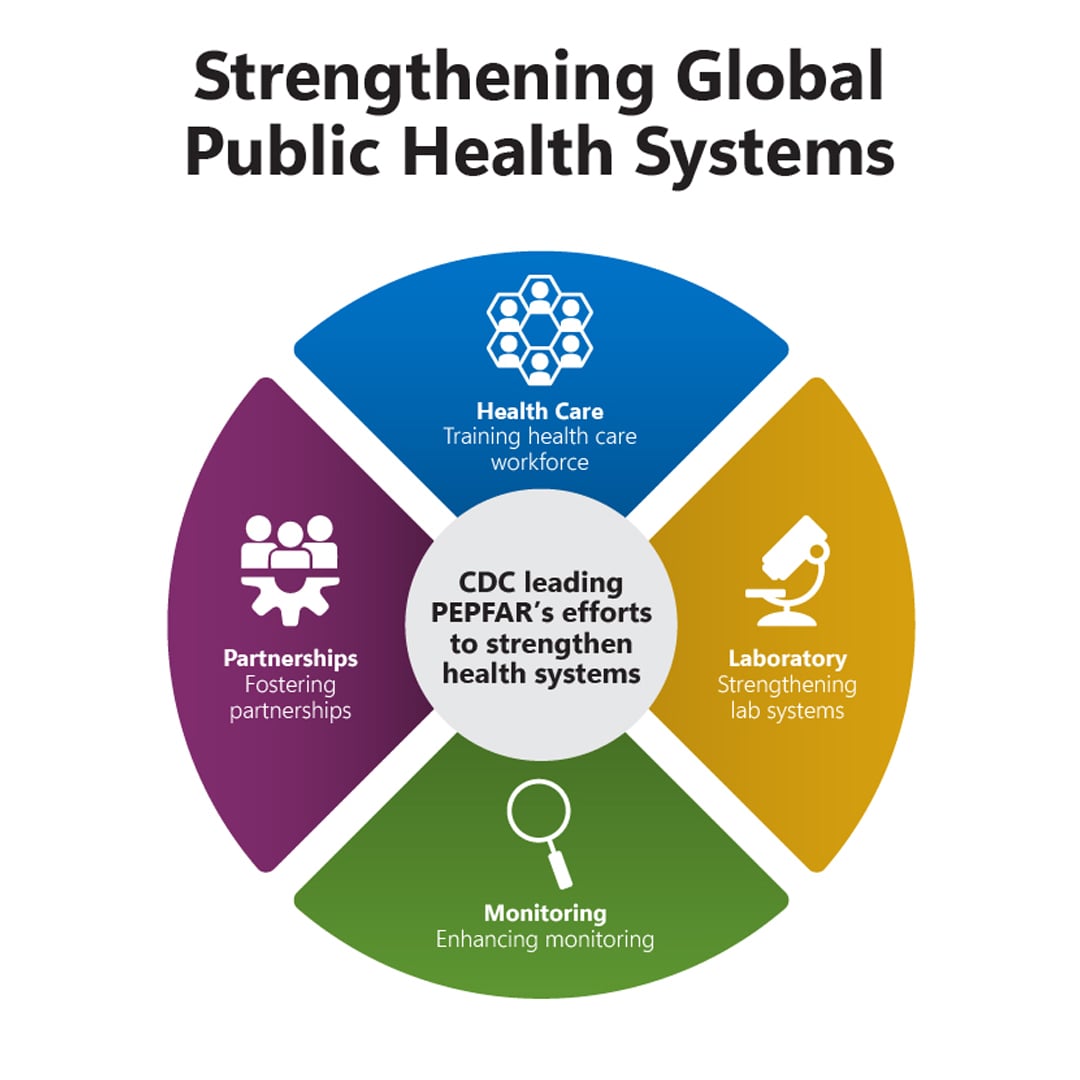At a glance
An analysis published in a March 2023 Morbidity and Mortality Weekly Report (MMWR) shared insights into the impact of PEPFAR. The report revealed that from 2004 to 2022, the number of people living with HIV who received lifesaving treatment through PEPFAR increased by 300 percent. In addition, the study found that from 2016 to 2022, the proportion of people living with HIV on PEPFAR-supported antiretroviral treatment who achieved viral suppression increased from 80 to 95 percent.
Transforming the global response to HIV
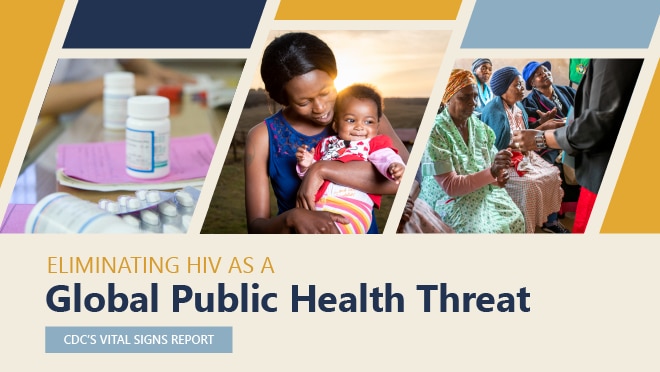
Since 2004, the U.S. President's Emergency Plan for AIDS Relief, or PEPFAR, has been a driving force in transforming the global response to HIV. When PEPFAR launched in 2003, HIV was a global crisis, devastating families, communities, and economies worldwide – particularly throughout sub-Saharan Africa. In many countries, lack of access to lifesaving HIV treatment and resources meant an HIV diagnosis almost certainly meant death. Today, thanks to PEPFAR, more than 20 million people living with HIV are leading healthy, productive lives because they are on PEPFAR-supported HIV treatment worldwide.
An analysis published in MMWR revealed that US-led global efforts to scale up lifesaving treatment led to transformative progress in under 20 years. Despite these achievements, the analysis also revealed significant gaps fueled by many factors, including stigma and discrimination.
The findings from this report affirm that PEPFAR's efforts have not only dramatically altered the course of the HIV pandemic but have also strengthened the systems that keep the world safe from other global health threats. As the United States' premier public health agency and a PEPFAR implementing agency, CDC is at the forefront of these global HIV efforts, bringing scientific and technical expertise to bear in more than 50 countries and leading the way on a number of critical fronts.
In fact, the analysis found that CDC and partners are responsible for the majority of PEPFAR treatment efforts. While receiving roughly 50 percent of PEPFAR funding for HIV treatment worldwide, CDC supports more than 60 percent (62%) of all people with HIV on PEPFAR-supported anti-retroviral treatment.
A story of hope from Uganda
In 2004, John Robert Engole became the first person in the world to receive antiretroviral treatment (ART) through a CDC-supported clinic as part of PEPFAR. At the time of his HIV-positive diagnosis, John was incredibly ill due to his weakened immune system. “I had completely lost hope,” he says.
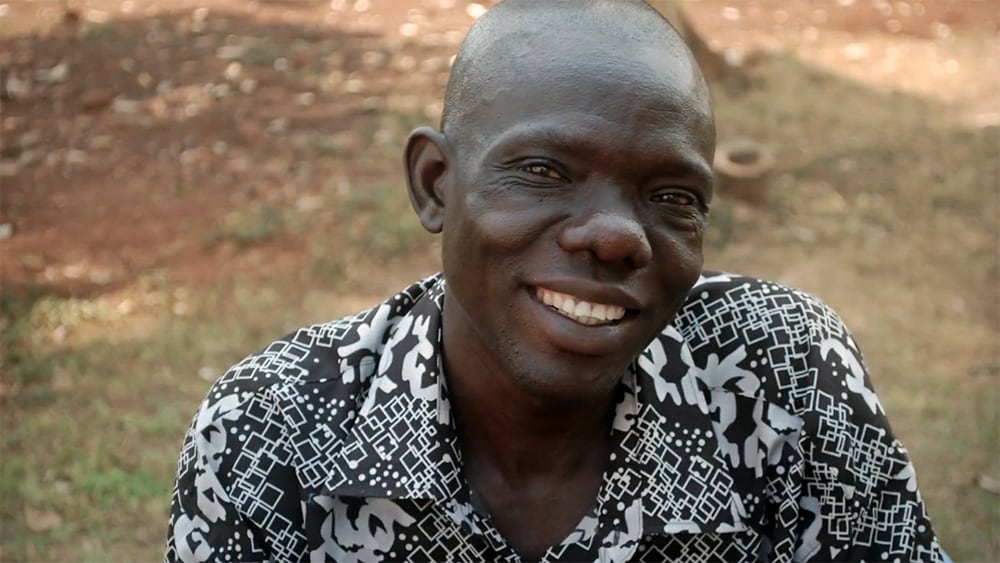
Now, almost 20 years later, John remains on lifesaving treatment, and is healthy and thriving.
John is just one of the millions of people who have received HIV treatment through CDC's efforts as part of PEPFAR in the 20 years since the initiative's inception. In Uganda – one of the first countries to provide PEPFAR-supported HIV treatment – ART scale-up since 2004 has helped avert an estimated 500,000 infections, including approximately 230,000 infections among HIV-exposed infants, and 600,000 HIV-related deaths. CDC has helped lead HIV treatment and prevention efforts in Uganda since 1991, working closely with the Ministry of Health and other partners to deliver evidence-based HIV services to those who need it.
The tremendous scale-up of HIV treatment efforts in Uganda has been echoed around the globe, with approximately 20 million persons with HIV infection in more than 50 countries receiving PEPFAR-supported ART since 2004. As a key implementing agency of PEPFAR, CDC has played a critical role – supporting lifesaving treatment for 12.5 million people in 2022, more than 40 percent of all people on HIV treatment worldwide.
"Twenty years after the announcement of PEPFAR, the program's first patient is now aged 53 years and remains on treatment with a suppressed viral load," says Dr. Emilio Dirlikov, CDC-Uganda Health Service Branch Chief. "His story has been replicated millions of times over because of the dedicated support of the American people through PEPFAR and CDC's critical leadership on the frontlines of these efforts."
Today, John is a teacher, a father, a husband, and an advocate for HIV treatment in his community. His story is one of hope, resiliency, and infectious enthusiasm for helping others. "Being the first beneficiary of PEPFAR," he says, "I'd like to thank the U.S. government for the support they've given to Uganda, especially in my life."
The path forward
Over the past two decades, PEPFAR and CDC have dramatically altered the course of the HIV epidemic. Looking to the future, we must continue to build on this momentum if we are to eliminate HIV as a global public health threat once and for all. PEPFAR's 5-year strategy provides a powerful roadmap to achieving this goal. At CDC we are at the forefront, leading global efforts across each of the strategy's five key pillars.
Data from this report show that we are on the path to achieving these goals and validate that PEPFAR and CDC's efforts over the past two decades are working. We cannot stop now.
As a key implementing agency of PEPFAR, CDC is on the frontlines in more than 50 countries, bringing a combination of scientific and technical expertise, and four decades of on-the-ground experience to bear in the fight against HIV. CDC's longstanding efforts, as part of PEPFAR, are not only transforming countries but saving countless individual lives.

